By Rebecca Starr
This session will ask you to think about something that you feel strongly about changing, improving or protecting in society. Focusing on protest and social movements, you will create your own bold protest poster that expresses your desires for change.
Submit images of your drawings, posters and protests or post online and tag @natsatclub and @uolartsoutreach
Overview
Throughout history people have protested as a way of publicly sharing how they feel about or how they object to something. Protests take many forms, from parades where towns and cities are filled with people to individuals walking, sitting and staging protests outside institutions that they oppose. People can protest for issues that impact themselves, their families and friends, their finances, or sometimes on behalf of people or causes that do not have their voices heard in wider society.
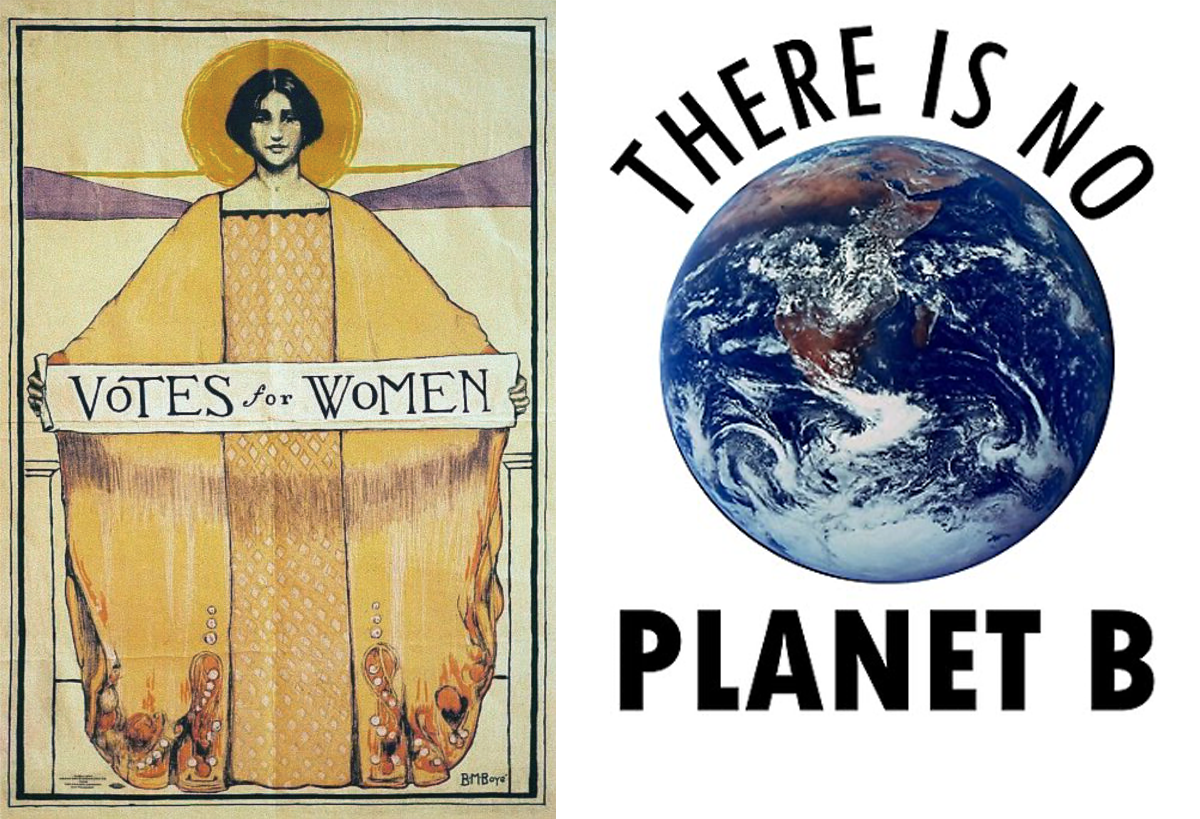
left – “Votes for Women” 1920 source
right – “There is no Planet B” by a member at Art&Design Saturday Club, University of Leeds
Materials needed
- Cardboard or A3 paper for your background (try cutting up old boxes and cereal packets)
- Scissors
- Glue stick
- Assorted paper (newspaper and magazine scraps, coloured paper)
- Felt tip pens or markers
- Pens/pencils
Activity part one – Giving a Voice
Now is the time to stage an imaginary protest on behalf of something that cannot voice its own opinions
1. Look around the room that you’re working in and choose an object that you want to give a voice to eg a salt grinder, a rug, an ornament, a packet of biscuits
2. Think about what this object might feel strongly against.
eg is the salt grinder tired of being shaken around? Is the rug sick of being walked all over? Is the ornament bored of sitting static on the shelf watching you have fun? Are the biscuits over being dunked in tea?
3. Now, spend 10 minutes sketching this object as the leader of a protest movement. Think about how it will be protesting:
– Will it be alone or supported by other objects?
– Will your object be holding anything; for example, will it have a banner or a poster? If so, what might these banners or posters say?
– What slogans might they include? For example:
‘SALT GRINDERS AGAINST SHAKING’
‘RUGS UNITED – WE WILL NO LONGER BE WALKED ALL OVER’
‘STATUES AGAINST BEING STILL’
‘STOP DUNKING MY FAMILY’
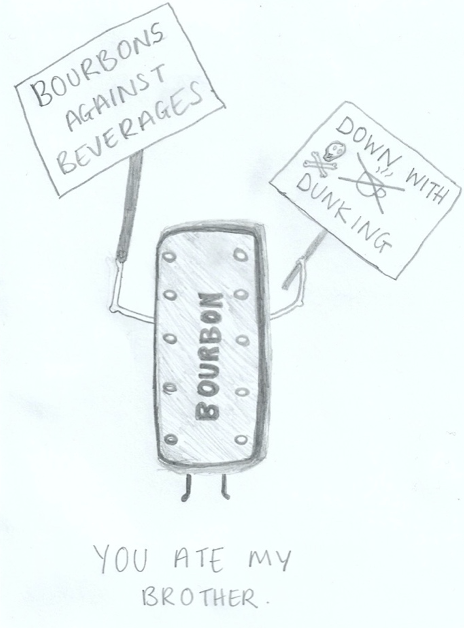
Activity part two – The Art of Protest
There is no set history of protest art. Throughout time and across the world art has been used as a way of bringing people together to support causes that feel passionate about. Activists work to empower individuals and communities and art is a crucial tool in engaging people with causes as it can provide recognisable images, symbols and slogans that come to be a key part of social movements and their successes.
There can be social movements and protests relating to anything and everything. Protests often have a social, political, cultural or environmental message. Have a look at some of the examples below for inspiration relating to fighting wage inequality, discrimination and gun violence, and saving the environment.
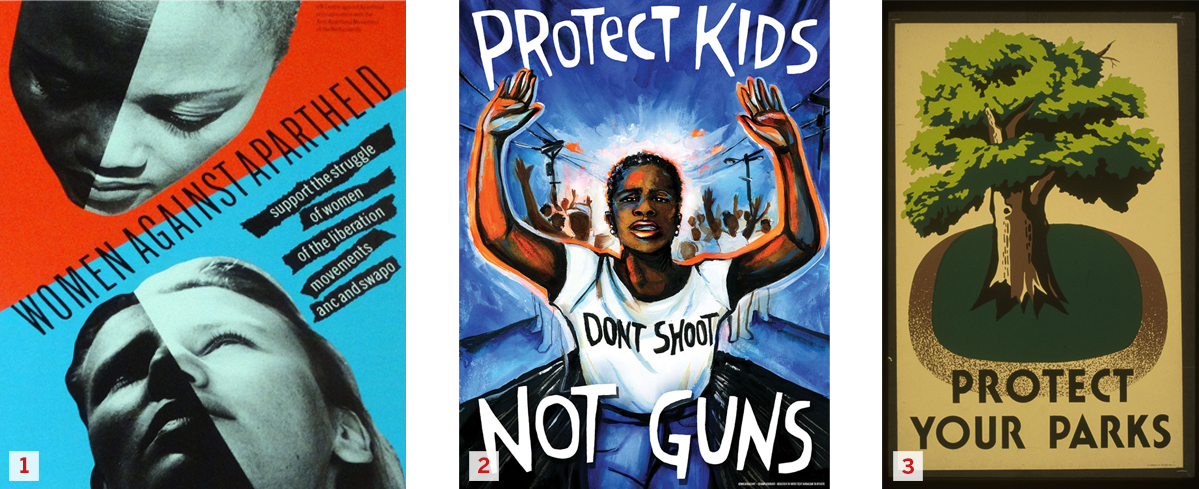
1. 1984 poster by Dutch design group Wild Plakken
2. 2018 poster by Micah Bazant for Amplifier, created for March For Our Lives – a student-led protest campaigning for stricter gun laws
3. 1938 poster by Stanley Thomas Clough
You will notice that these posters use a range of materials from collage and paints, to markers and felt tips. You can use anything and everything to make protest art so there are no limits on what can be achieved with the resources you have at hand.
In order to create your own protest art, think about and answer the following questions:
- What social, political, cultural or environmental causes do you care about? What do you feel passionate about changing in society?
- Are there any images that you think of when you think about these causes?
- Will your poster feature any text or slogans?
Use your answers as the basis for your protest poster using materials such as pencils, crayons, markers or collage to complete your artwork. Think about how you can make the image striking using different colours, images and text.
Once you’ve created your poster you can stage your own protest!
Thank you for taking part in the University of Leeds Art&Design Saturday Club Workshop.
Submit images of your drawings, posters and protests or post online and tag @natsatclub and @uolartsoutreach
Here are some examples by the Club members of the University of Leeds Saturday Club
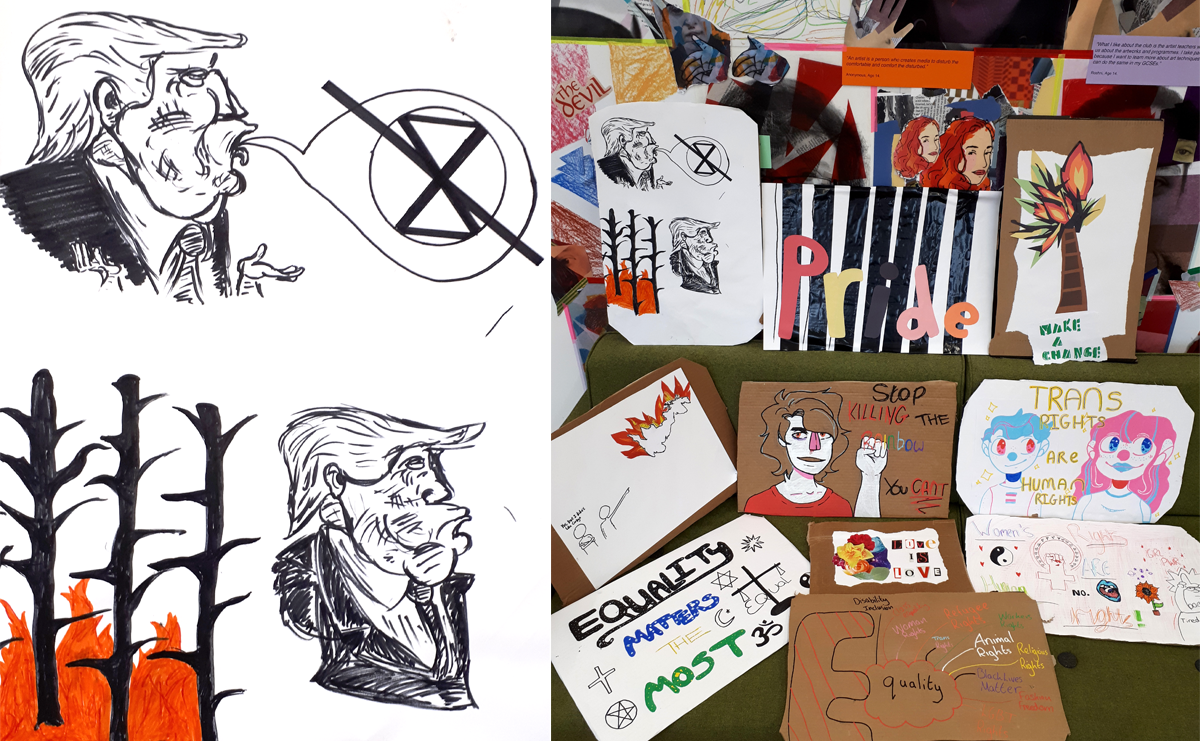
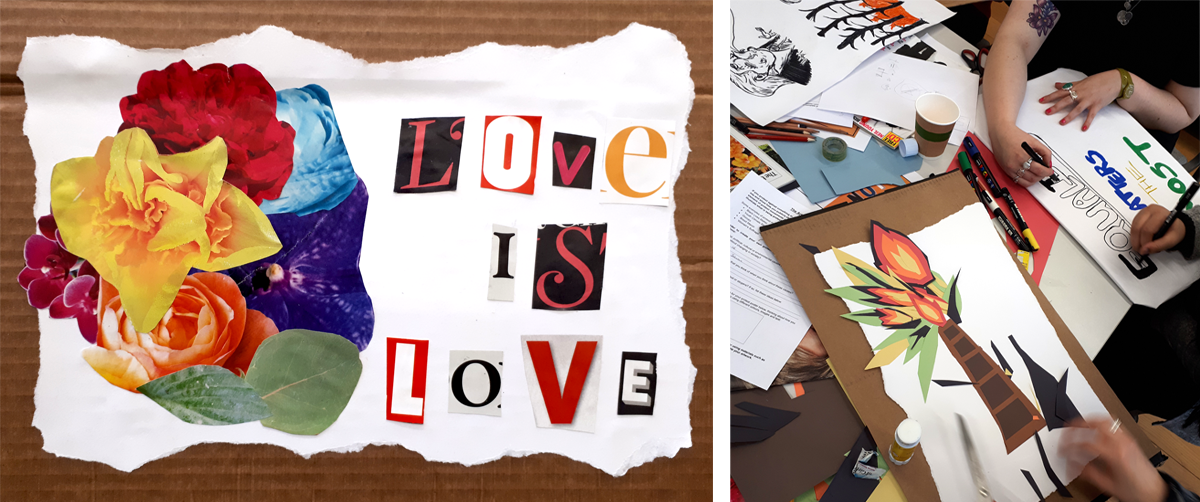
Resources & References
Creative Review – Protest Art
Harvard Centre for European Studies and Design Observer – Atelier Populaire
Historical Society of Long Beach – Votes for Women
LA Mag – Black Lives Matter
Muslim Girl –Scarves for Solidarity
Tate – Guerrilla Girls information and images
Tate – Protest art
Tate – Samuel Fosso
You might be interested in listening to this podcast where Jeremy Deller, an artist whose work often deals with social inequality and protests, talks to other artists and poets, including Anahita Rezvan-Rad, Sarah Carrne and Raju Rage, about how their art can help bring about social change.
The video below explores the work of Guerrilla Girls, an anonymous art collective founded in New York in 1985. The Guerrilla Girls have the mission of highlighting gender and race inequality in the wider arts community and do this through designing posters, printing books and putting on public performances.
Not all protest art takes the form of posters. You might want to have a look at these videos that relate to performance art and how this can be used as a way of highlighting social causes.
Introduction to performance art and activism from Tate
Tania Bruguera is a Cuban artist whose work often deals with themes of police violence and inequality in society. See her performance, Tatlin’s Whisper for ideas of how performance art can be used to highlight social causes.
Similarly, some artists have used their bodies to create body art as a way of exploring issues that have impacted their lives. See this video as an introduction. It refers to works by artists such as Marina Abramović and Samuel Fosso, who have put on performances or used photography as a means of protest.
Glossary
Activists
- A person who campaigns alone or as part of a group to bring about political and social change.
Black Lives Matter
- Black Lives Matter is an international movement originating among African-American communities which campaigns against racism – and whose mission is ‘to intervene in violence inflicted on black communities by the state and vigilantes’.
Body Art
- Body art originated in the 1970s and is based on an artist using their own bodies within their work. Body art is often associated with photography and performance art.
Brexit March
- In October 2019 approximately one million people joined the ‘People’s Vote’ protest to campaign against the UK’s decision to leave the European Union.
Collage
- A piece of art made from sticking various materials together.
Occupy
- The Occupy movement began in 2011 in New York as a protest against economic inequality. The movement spread across the USA and the globe.
Performance Art
- Performance art refers to artworks where an artist or group of people create a public display of art. Often, performance art relies on connecting with the audience and can take place inside and outside of galleries and museums.
Protest
- A public expression of objection or disapproval in opposition to something that a person may be powerless to prevent or avoid.
Slogan
- A short and striking memorable phrase that is often used in advertising or social movements.
Society
- The term used to refer to people living together in local and wider communities.
Women’s Suffrage
- This refers to the right of women to vote. Women’s suffrage movements began in the nineteenth century and campaigned for women to be allowed to right to vote in elections.
Youth Climate Strike
- This is an international movement founded by Greta Thunberg in August 2018. This movement sees students take time off from their school classes on Fridays to demand that political leaders take action to prevent climate change.
Contributed by Rebecca Starr, University of Leeds Art&Design Saturday Club
Rebecca is an Education Outreach Fellow at the University of Leeds and is currently finishing her PhD in the School of Fine Art, History of Art and Cultural Studies.
She has worked with community groups and arts charities to design and delivery arts workshops and recently worked with Creative Time to organise an international summit focusing on how the arts assist social movements. She is interested in arts education, widening participation and socially-engaged art.